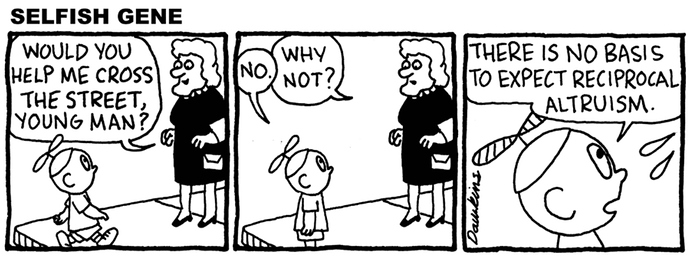I wanted to extemporize a bit more on a tangent from the interesting thread, and thought maybe I should make it a new topic. At the other bbs I was poor at guessing what might merit it. But this place is new, it’s all on us to make them, so I figured why not.
This made me wonder, how often does evolution work this way? The basic possibility is definitely there, with groups rising and falling in prominence all the time. The lycophytes once formed vast forests towering over other plants, and now the survivors are only little plants in the shadow of their descendants.
On the other hand, in the example I gave it sounded like a reasonably one-way slide. The shallower seas are home to diverse animals undergoing constant evolution and turn over, with the deep ocean holding refugees from the process. That might just be how things have worked out, but it might be some property of the habitat that encourages migrations in but not out, so that lineages in some sense get stuck.
Like I said, I haven’t found much about that, and as Wanderfound’s original link pointed out it’s not a good place for fossils. But I did see a paper (pdf) about fish leaving the ocean. Except for coelacanths, most of the “ancient” fish lineages – like lungfish, sturgeons, and gars – have ended up solely in freshwater, so apparently it too can be a sort of refuge. They found fish go both ways, but this one more than the other. It’s probably a lot easier to find a stream without much competition than a sea.
So then I was trying to think of where evolution actually did swing back and forth – where the same group fell and then recovered. I don’t think there are many, though that may be because we can’t see long enough. The best I can think of is our own lineage, the synapsids.
These include what used to be called mammal-like reptiles, which were dominant during the Permian. The early mammals were much more diverse than once thought: there were at some point hunters like Repenomamus, burrowers like Docofossor, swimmers like Castorocauda, even gliders like Volaticotherium. But there is no question they were overshadowed by true reptiles like dinosaurs and pterosaurs until the K-T extinction.
After…well, their lineage hasn’t done that badly. There are some 10000 species of birds and 10000 lizards and snakes, compared to 5400 mammals, a bit less than frogs. The wild animals I see most often (except bugs) are dinosaurs. But if you talk about rulers, the larger animals are all mammals, including the biggest ever known.
This switch might just be an extremely lucky break; nothing ruins the usual odds like a giant meteor, which is why it is a popular candidate these days. But in the aftermath of K-T there were also new giant birds like Gastornis, giant snakes like Titanoboa, giant turtles and crocodiles, all also since replaced. So maybe the giant niche is more prone to swinging back and forth, or maybe mammals weren’t really that sidelined, or maybe sidelining isn’t really such a thing in at least in the very long run.
It’s tough to generalize from so few examples, but it’s interesting to consider. For me, anyway. I hope there’s something in all that for you too, and if not, thanks for letting me ramble. 
